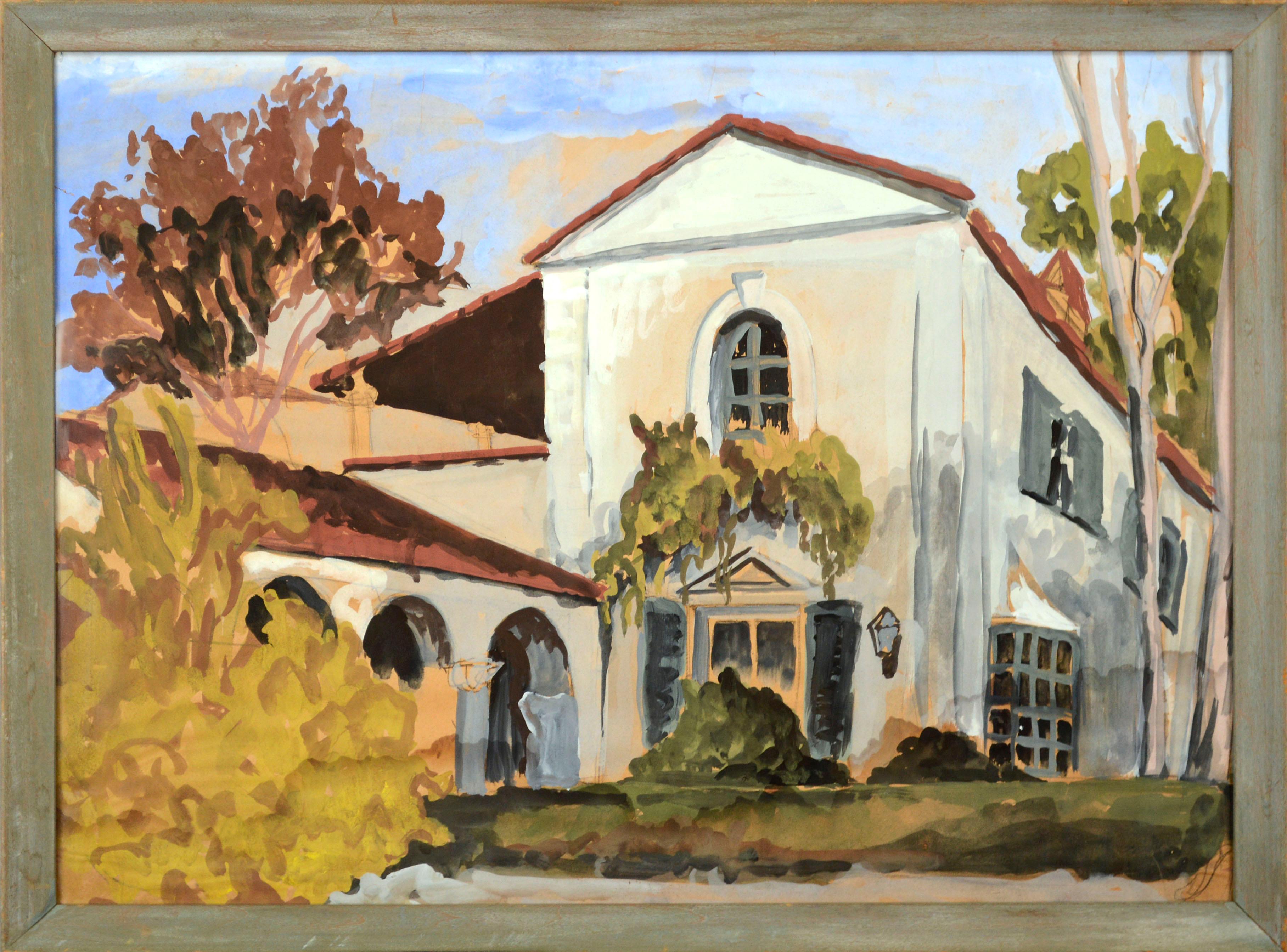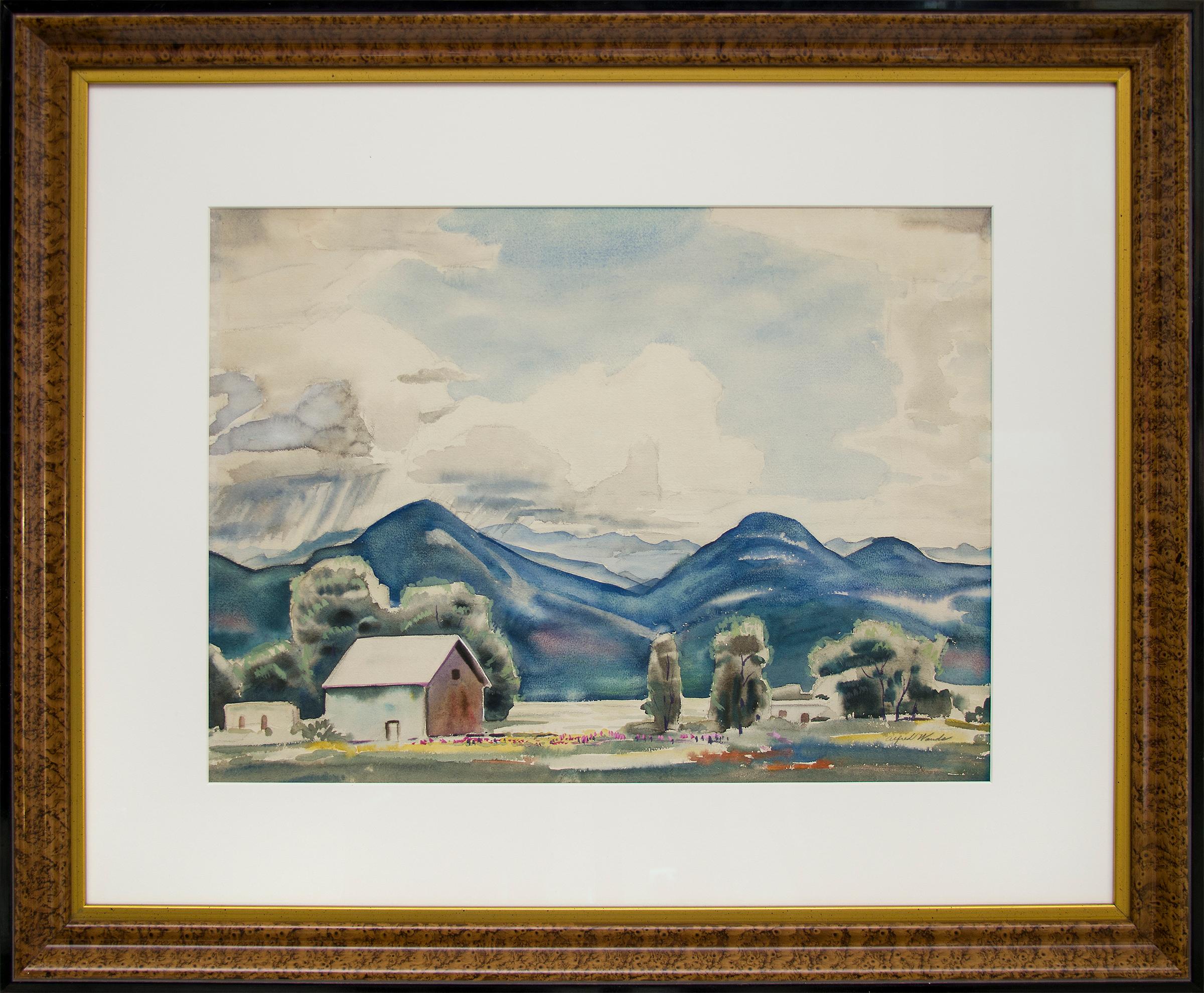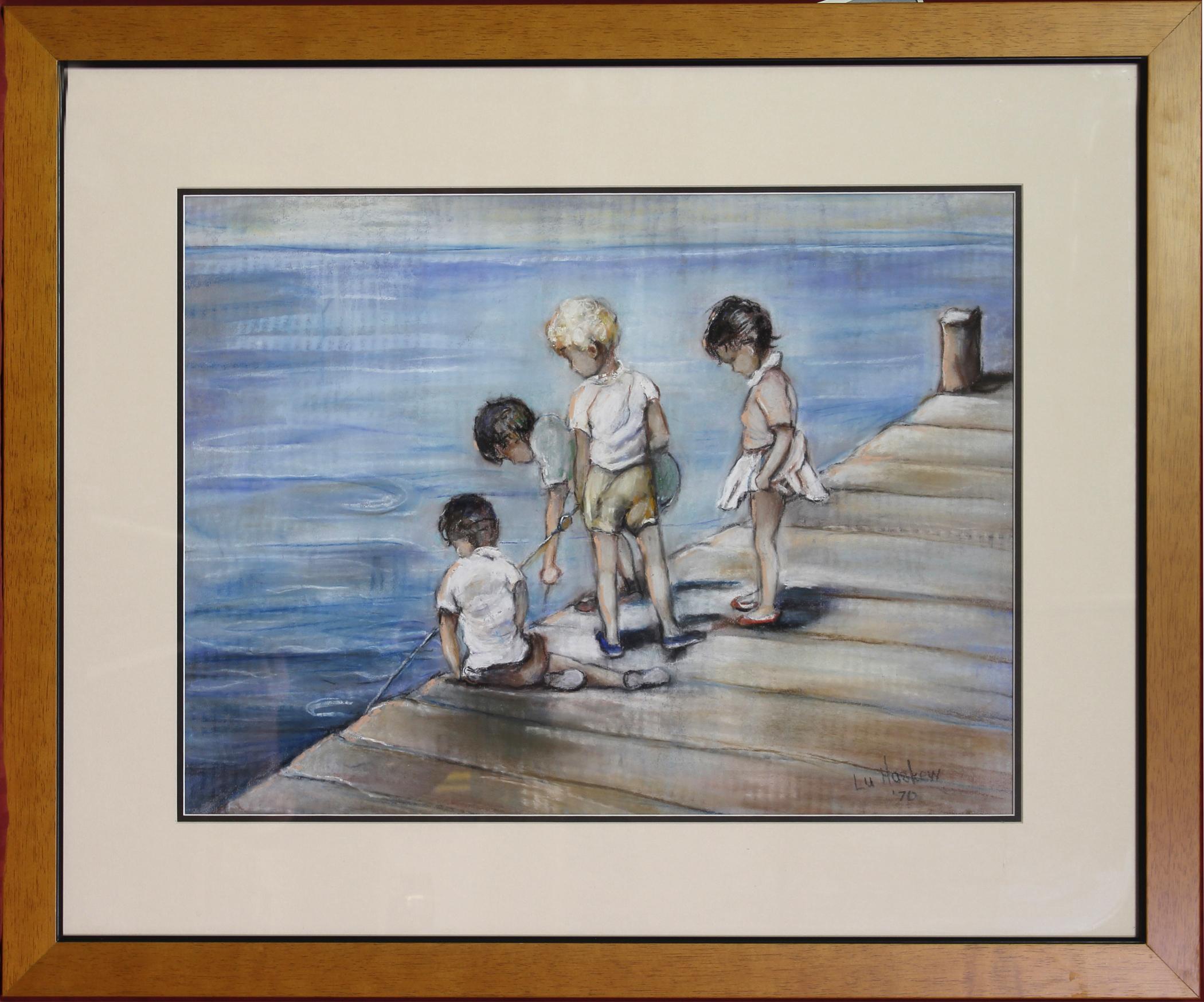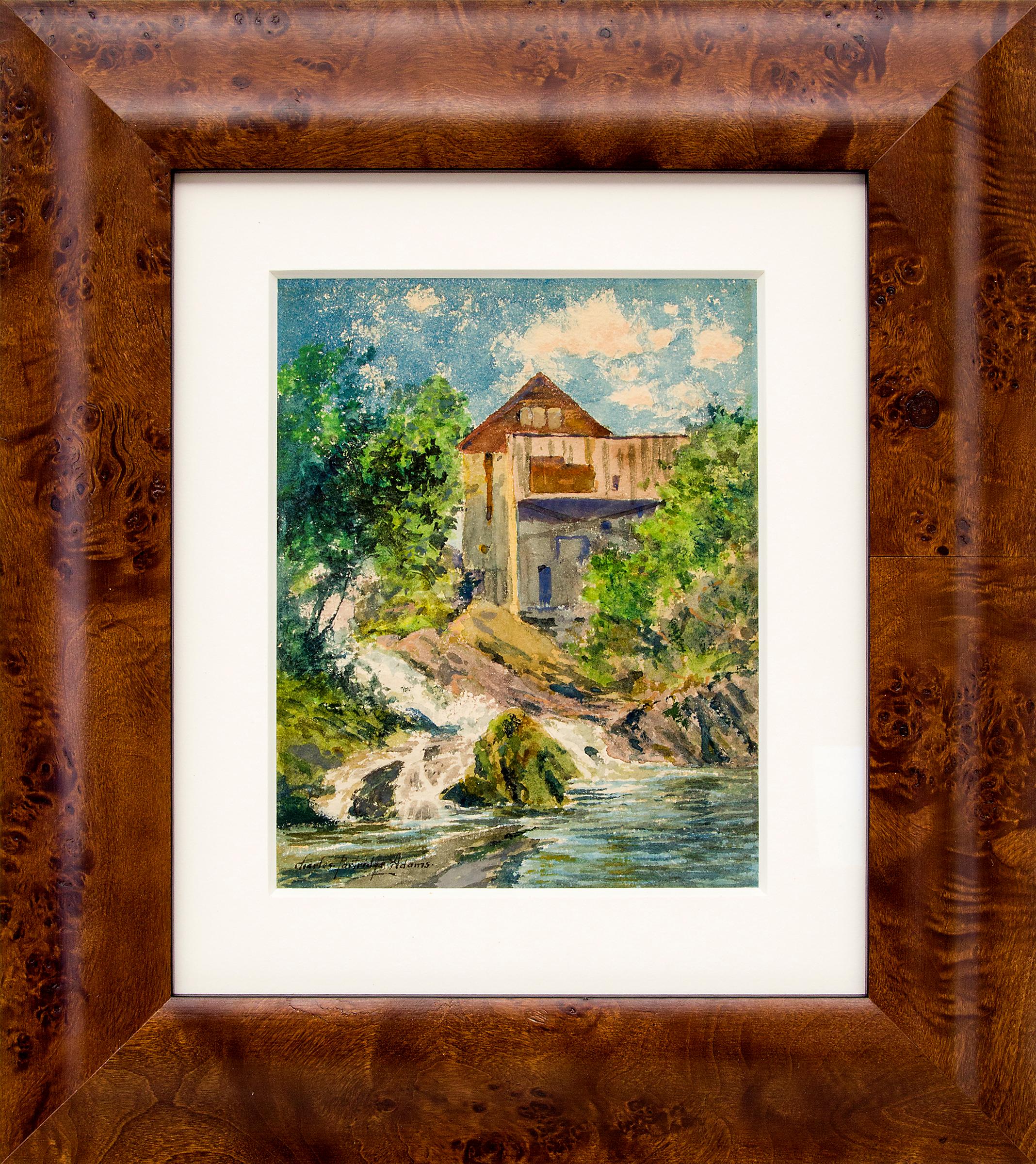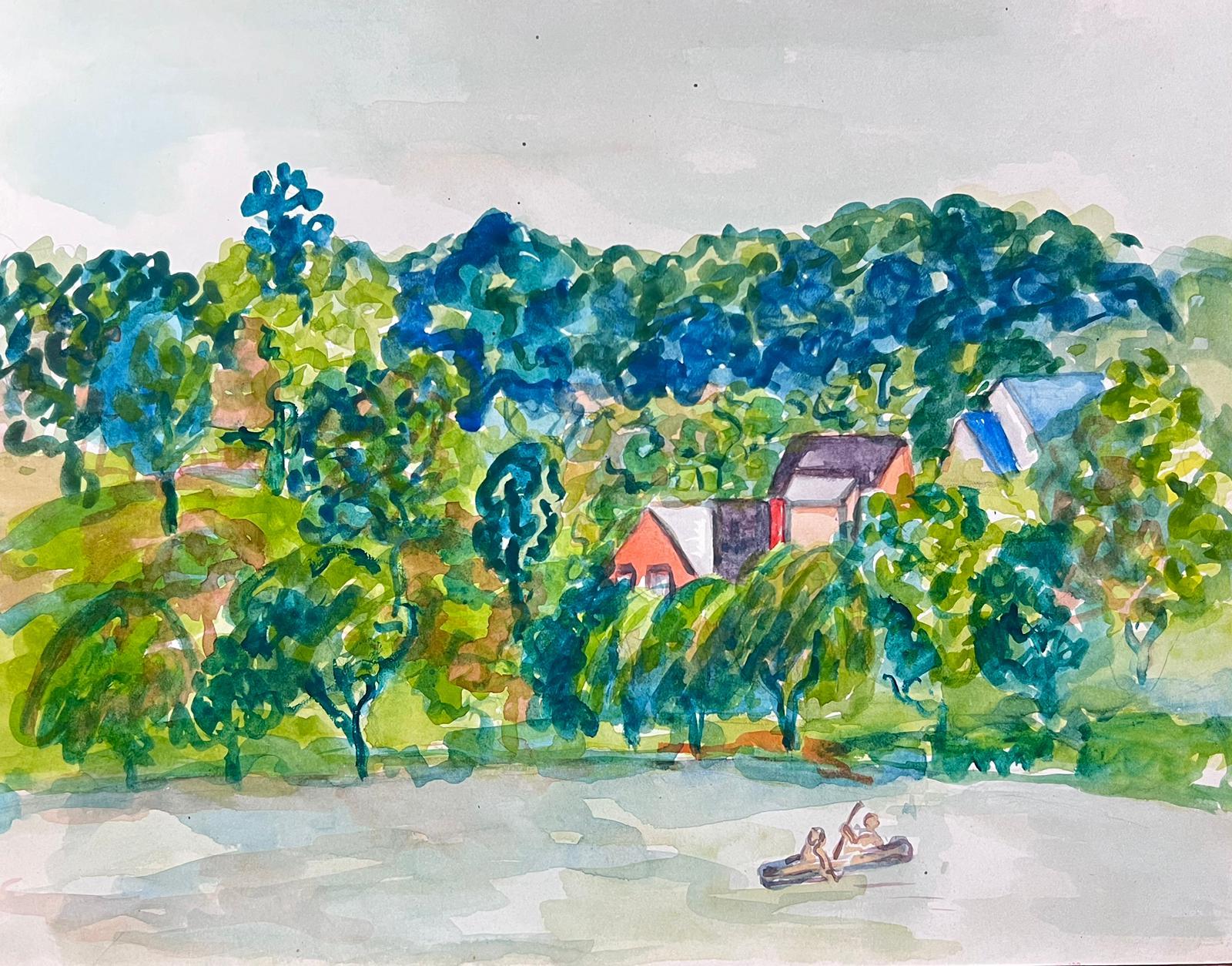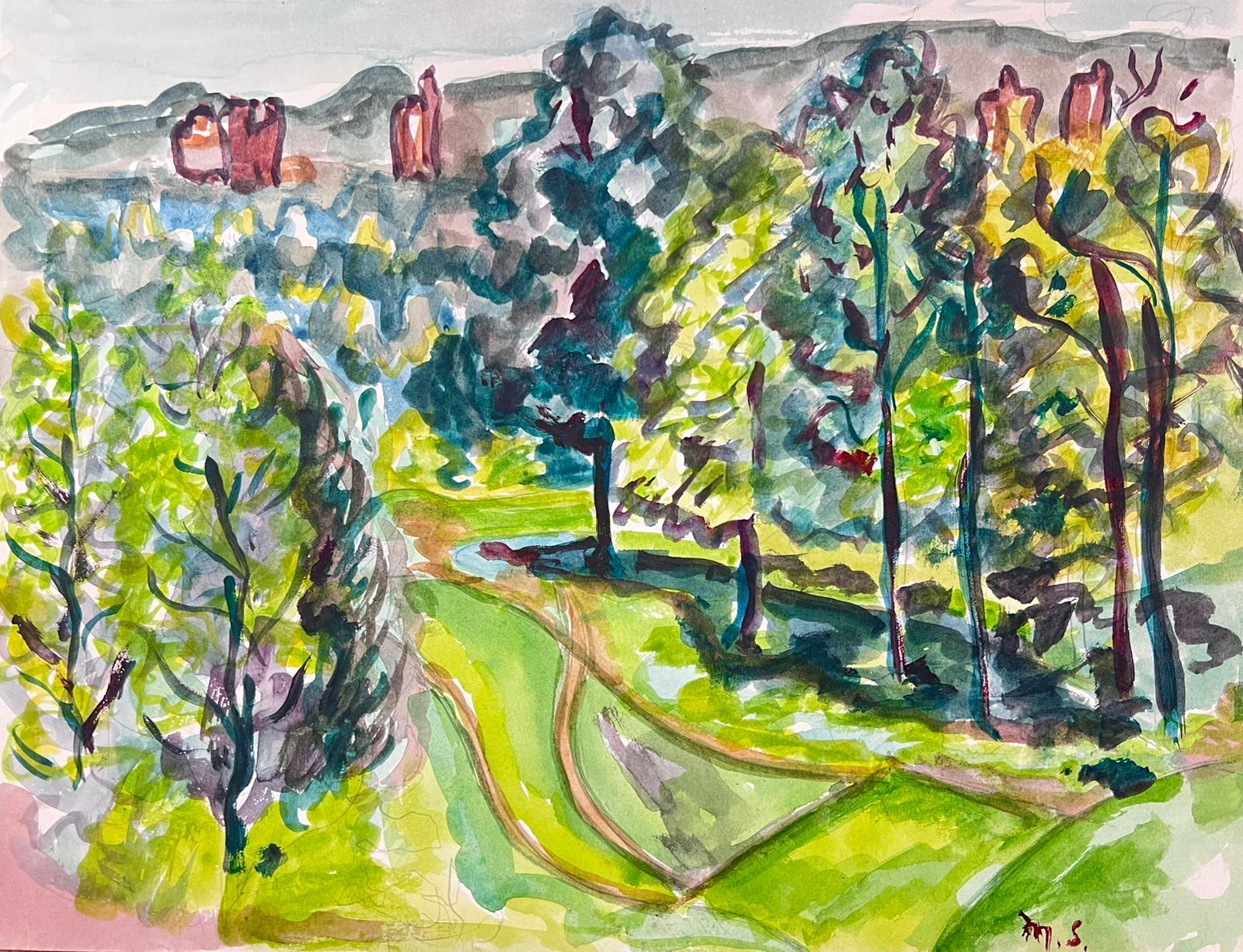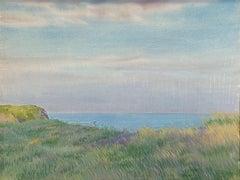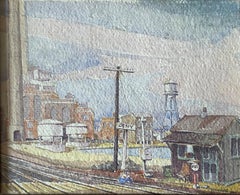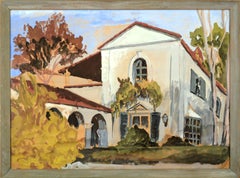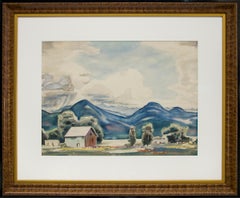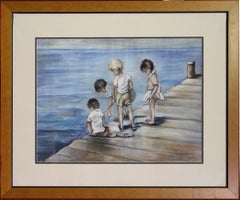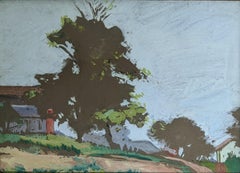
"House on a Hill, " Clara Bell, Female Artist Landscape, American Impressionism
View Similar Items
Want more images or videos?
Request additional images or videos from the seller
1 of 4
Clara Louise Bell"House on a Hill, " Clara Bell, Female Artist Landscape, American Impressionismcirca 1935
circa 1935
About the Item
- Creator:Clara Louise Bell (1886 - 1978, American)
- Creation Year:circa 1935
- Dimensions:Height: 8.83 in (22.43 cm)Width: 11.5 in (29.21 cm)
- Medium:
- Movement & Style:
- Period:
- Condition:
- Gallery Location:New York, NY
- Reference Number:1stDibs: LU184129930882
About the Seller
5.0
Gold Seller
Premium sellers maintaining a 4.3+ rating and 24-hour response times
Established in 2022
1stDibs seller since 2022
98 sales on 1stDibs
Authenticity Guarantee
In the unlikely event there’s an issue with an item’s authenticity, contact us within 1 year for a full refund. DetailsMoney-Back Guarantee
If your item is not as described, is damaged in transit, or does not arrive, contact us within 7 days for a full refund. Details24-Hour Cancellation
You have a 24-hour grace period in which to reconsider your purchase, with no questions asked.Vetted Professional Sellers
Our world-class sellers must adhere to strict standards for service and quality, maintaining the integrity of our listings.Price-Match Guarantee
If you find that a seller listed the same item for a lower price elsewhere, we’ll match it.Trusted Global Delivery
Our best-in-class carrier network provides specialized shipping options worldwide, including custom delivery.More From This Seller
View All"Monhegan Island, Maine, " Edward Dufner, American Impressionism Landscape View
By Edward Dufner
Located in New York, NY
Edward Dufner (1872 - 1957)
Monhegan Island, Maine
Watercolor on paper
Sight 16 x 20 inches
Signed lower right
With a long-time career as an art teacher and painter of both 'light' and 'dark', Edward Dufner was one of the first students of the Buffalo Fine Arts Academy to earn an Albright Scholarship to study painting in New York. In Buffalo, he had exchanged odd job work for drawing lessons from architect Charles Sumner. He also earned money as an illustrator of a German-language newspaper, and in 1890 took lessons from George Bridgman at the Buffalo Fine Arts Academy.
In 1893, using his scholarship, Dufner moved to Manhattan and enrolled at the Art Students League where he studied with Henry Siddons Mowbray, figure painter and muralist. He also did illustration work for Life, Harper's and Scribner's magazines.
Five years later, in 1898, Dufner went to Paris where he studied at the Academy Julian with Jean-Paul Laurens and privately with James McNeill Whistler. Verification of this relationship, which has been debated by art scholars, comes from researcher Nancy Turk who located at the Smithsonian Institution two 1927 interviews given by Dufner. Turk wrote that Dufner "talks in detail about Whistler, about how he prepared his canvasas and about numerous pieces he painted. . . A great read, the interview puts to bed" the ongoing confusion about whether or not he studied with Whistler.
During his time in France, Dufner summered in the south at Le Pouleu with artists Richard Emil Miller...
Category
Early 20th Century American Impressionist Landscape Drawings and Waterco...
Materials
Watercolor, Paper
"Train Station, " Max Kuehne, Industrial City Scene, American Impressionism
By Max Kuehne
Located in New York, NY
Max Kuehne (1880 - 1968)
Train Station, circa 1910
Watercolor on paper
8 1/4 x 10 1/4 inches
Signed lower right
Provenance:
Private Collection, Illinois
Max Kuehne was born in Halle, Germany on November 7, 1880. During his adolescence the family immigrated to America and settled in Flushing, New York. As a young man, Max was active in rowing events, bicycle racing, swimming and sailing. After experimenting with various occupations, Kuehne decided to study art, which led him to William Merritt Chase's famous school in New York; he was trained by Chase himself, then by Kenneth Hayes Miller. Chase was at the peak of his career, and his portraits were especially in demand. Kuehne would have profited from Chase's invaluable lessons in technique, as well as his inspirational personality. Miller, only four years older than Kuehne, was another of the many artists to benefit from Chase's teachings. Even though Miller still would have been under the spell of Chase upon Kuehne's arrival, he was already experimenting with an aestheticism that went beyond Chase's realism and virtuosity of the brush. Later Miller developed a style dependent upon volumetric figures that recall Italian Renaissance prototypes.
Kuehne moved from Miller to Robert Henri in 1909. Rockwell Kent, who also studied under Chase, Miller, and Henri, expressed what he felt were their respective contributions: "As Chase had taught us to use our eyes, and Henri to enlist our hearts, Miller called on us to use our heads." (Rockwell Kent, It's Me O Lord: The Autobiography of Rockwell Kent. New York: Dodd, Mead and Co., 1955, p. 83). Henri prompted Kuehne to search out the unvarnished realities of urban living; a notable portion of Henri's stylistic formula was incorporated into his work.
Having received such a thorough foundation in art, Kuehne spent a year in Europe's major art museums to study techniques of the old masters. His son Richard named Ernest Lawson as one of Max Kuehne's European traveling companions. In 1911 Kuehne moved to New York where he maintained a studio and painted everyday scenes around him, using the rather Manet-like, dark palette of Henri.
A trip to Gloucester during the following summer engendered a brighter palette. In the words of Gallatin (1924, p. 60), during that summer Kuehne "executed some of his most successful pictures, paintings full of sunlight . . . revealing the fact that he was becoming a colorist of considerable distinction." Kuehne was away in England the year of the Armory Show (1913), where he worked on powerful, painterly seascapes on the rocky shores of Cornwall. Possibly inspired by Henri - who had discovered Madrid in 1900 then took classes there in 1906, 1908 and 1912 - Kuehne visited Spain in 1914; in all, he would spend three years there, maintaining a studio in Granada. He developed his own impressionism and a greater simplicity while in Spain, under the influence of the brilliant Mediterranean light. George Bellows convinced Kuehne to spend the summer of 1919 in Rockport, Maine (near Camden). The influence of Bellows was more than casual; he would have intensified Kuehne's commitment to paint life "in the raw" around him.
After another brief trip to Spain in 1920, Kuehne went to the other Rockport (Cape Ann, Massachusetts) where he was accepted as a member of the vigorous art colony, spearheaded by Aldro T. Hibbard. Rockport's picturesque ambiance fulfilled the needs of an artist-sailor: as a writer in the Gloucester Daily Times explained, "Max Kuehne came to Rockport to paint, but he stayed to sail." The 1920s was a boom decade for Cape Ann, as it was for the rest of the nation. Kuehne's studio in Rockport was formerly occupied by Jonas Lie.
Kuehne spent the summer of 1923 in Paris, where in July, André Breton started a brawl as the curtain went up on a play by his rival Tristan Tzara; the event signified the demise of the Dada movement. Kuehne could not relate to this avant-garde art but was apparently influenced by more traditional painters — the Fauves, Nabis, and painters such as Bonnard. Gallatin perceived a looser handling and more brilliant color in the pictures Kuehne brought back to the States in the fall. In 1926, Kuehne won the First Honorable Mention at the Carnegie Institute, and he re-exhibited there, for example, in 1937 (Before the Wind). Besides painting, Kuehne did sculpture, decorative screens, and furniture work with carved and gilded molding. In addition, he designed and carved his own frames, and John Taylor Adams encouraged Kuehne to execute etchings. Through his talents in all these media he was able to survive the Depression, and during the 1940s and 1950s these activities almost eclipsed his easel painting. In later years, Kuehne's landscapes and still-lifes show the influence of Cézanne and Bonnard, and his style changed radically.
Max Kuehne died in 1968. He exhibited his work at the National Academy of Design, the Art Institute of Chicago, the Carnegie Institute in Pittsburgh, the Memorial Art Gallery of the University of Rochester, and in various New York City galleries. Kuehne's works are in the following public collections: the Detroit Institute of Arts (Marine Headland), the Whitney Museum (Diamond Hill...
Category
1910s American Impressionist Landscape Drawings and Watercolors
Materials
Paper, Watercolor
"Gloucester Harbor at Sunset, " John Hare, Cape Ann, New England Watercolor View
Located in New York, NY
John Hare
Gloucester Harbor at Sunset, Massachusetts
Signed lower right
Watercolor on paper
16 x 12 inches
John Cuthbert Hare, 1908-1978, was a watercolorist who painted boats, seascapes and harbor scenes. He was primarily associated New England, especially Cape Cod, Massachusetts where he spent his summers from 1938 to 1965. However, he was in Florida where he was a member of the St. Augustine Art Association, and other locations on the East Coast.
It is likely Hare was born in New York City. He first studied commercial art in Brooklyn at the Pratt Institute and also studied at the Art Students League in Manhattan. He worked for Hearst newspapers corporation, and in 1933 married. In the next few years, he and his wife traveled extensively, camping and painting and exhibiting his work in galleries.
In 1935, they visited St. Augustine and an exhibition of his watercolors was held there in the old bank...
Category
Mid-20th Century Impressionist Landscape Drawings and Watercolors
Materials
Paper, Watercolor
"Tugboat at Dock, " Reginald Marsh, Modern WPA Industrial Ship
By Reginald Marsh
Located in New York, NY
Reginald Marsh
Tugboat at Dock, circa 1937
Signed lower right
Watercolor and pencil on paper
13 3/4 x 20 inches
Housed in a Lowy frame.
Provenance:
Sotheby'...
Category
1930s Modern Landscape Paintings
Materials
Paper, Watercolor, Pencil
"Gray Morning" James MacMaster, Scottish Seascape, Marine Ship Landscape
By James MacMaster
Located in New York, NY
James MacMaster
Gray Morning
Signed and titled lower left
Watercolor on paper
10 1/4 x 14 inches
Provenance:
Private Collection, New Jersey
Category
Late 19th Century Landscape Paintings
Materials
Paper, Watercolor
$540 Sale Price
70% Off
"Irvine Harbour" James MacMaster, Scottish Seascape, Marine Ship Painting
By James MacMaster
Located in New York, NY
James MacMaster
Irvine Harbour
Signed lower right
Watercolor on paper
10 1/4 x 14 inches
Provenance:
Private Collection, New Jersey
Category
Late 19th Century Landscape Paintings
Materials
Paper, Watercolor
$540 Sale Price
70% Off
You May Also Like
Mid Century California Mission Landscape
Located in Soquel, CA
Beautiful mid century landscape of a historic California mission, highlighting its iconic architectural details such as a columned arches, white was...
Category
Mid-20th Century American Impressionist Landscape Paintings
Materials
Gouache, Cardboard, Paper
$600 Sale Price
20% Off
"Canal at Indian Mound Road" RARE Ben Fenske Gouache work on paper black & white
By Ben Fenske
Located in Sag Harbor, NY
Painted during the 2015 Winter Equestrian Festival in Wellington, Florida. A black and white depiction of a canal, is barely recognizable, due to Fenske's wild brushstrokes and lack...
Category
21st Century and Contemporary American Impressionist Landscape Paintings
Materials
Gouache, Paper
Sangre de Cristo Mountains Watercolor Landscape Painting, Southern Colorado
By Alfred Wands
Located in Denver, CO
This original watercolor painting by Alfred Wands (1904-1998) captures the breathtaking beauty of the Sangre de Cristo Mountain range in Sou...
Category
20th Century American Impressionist Landscape Paintings
Materials
Watercolor
Searching the Waters
By Lu Haskew
Located in Loveland, CO
Searching the Waters by Lu Haskew
Pastel 18x22" image size, 26x30" framed
Figurative Portrait of young children on a dock looking into the water.
ABOUT THE ARTIST: Lu Haskew 1921...
Category
1990s American Impressionist Landscape Paintings
Materials
Watercolor
"Viareggio, Italy" Impressionist, Landscape, Watercolor
By Nelson H. White
Located in Sag Harbor, NY
"Viareggio, Italy" is an impressionist watercolor painting of a beautiful seaside city just outside the hills of tuscany in Italy.
Nelson H. White was born in New London, Connecticut in 1932. White has been surrounded by art and artists from the time he was born. He received his earliest art instruction from his grandfather, Henry Cooke White (1861-1952) and his father Nelson Cooke White (1900-1989), both important American artists. The family lived in Waterford, Connecticut and the elder White had been an early member of the art colony in Old Lyme, Connecticut. Known for his paintings of the Connecticut landscape and shoreline, Henry Cooke White became a teacher to his son, Nelson Cooke White. Living with his parents at the Florence Griswold house in Old Lyme, he met some of the most important and influential artists of the day, Childe Hassam, Will Howe Foote and Harry Hoffman.
Later, Nelson White's father began to take his family to summer on Shelter Island and became friendly with many of the artists of the Peconic colony such as Irving Wiles, an important American impressionist. After graduating from the Tabor Academy in Marion, Massachusetts in 1951, Nelson H. White began to study at Mitchell College in Connecticut but left to pursue studies in the violin, musical theory and composition. At this time, he began to spend more time studying art with his father and grandfather. By 1955, Nelson H. White had decided to devote himself to a career as a painter and traveled to Florence, Italy to become an apprentice to Pietro Annigoni, the world-renowned Florentine master. Within two years, the young White had won two awards for his work. While in Florence he also studied with the great Italian teacher, Nerina Simi. Today, White divides his time between the United States and Florence.
Although he has received instruction from some very important artists, White's work is highly individual. He paints with great spirit. Upon seeing his work one quickly senses White’s great love for nature and the outdoors. Through his eyes we are able to view and interpret nature in an intimate manner. Whether Nelson H. White is painting the Connecticut shore...
Category
21st Century and Contemporary American Impressionist Landscape Drawings ...
Materials
Watercolor
Canyon Country
By Lu Haskew
Located in Loveland, CO
Canyon Country by Lu Haskew
Pastel 16x20" image size
Landscape view of the Grand Canyon
ABOUT THE ARTIST: Lu Haskew 1921-2009
"Life is good to me. Being able to go to my studio five days weekly and paint for several hours, living in a supportive community, having family and friends who encourage me--all have contributed to helping me become an artist. Being fortunate to study with some of the artists I admire has kept me painting from the garden, people and my favorite things. With the support of galleries, teaching and doing demos, how could I do anything else? My goal is to try to be the best I can be by always being a student, looking for new ideas and stretching my horizons."
Upon retirement from a 33-year teaching career, Lu rented a studio in Loveland and began concentrating on
her oil and watercolor painting. Learning from artists she had followed and admired throughout the years
her painting became a full time career. Since 1992, she has studied with renowned painters Richard
Schmid, Clyde Aspevig, Joyce Pike, and others at the Scottsdale Art...
Category
1990s American Impressionist Landscape Paintings
Materials
Watercolor
